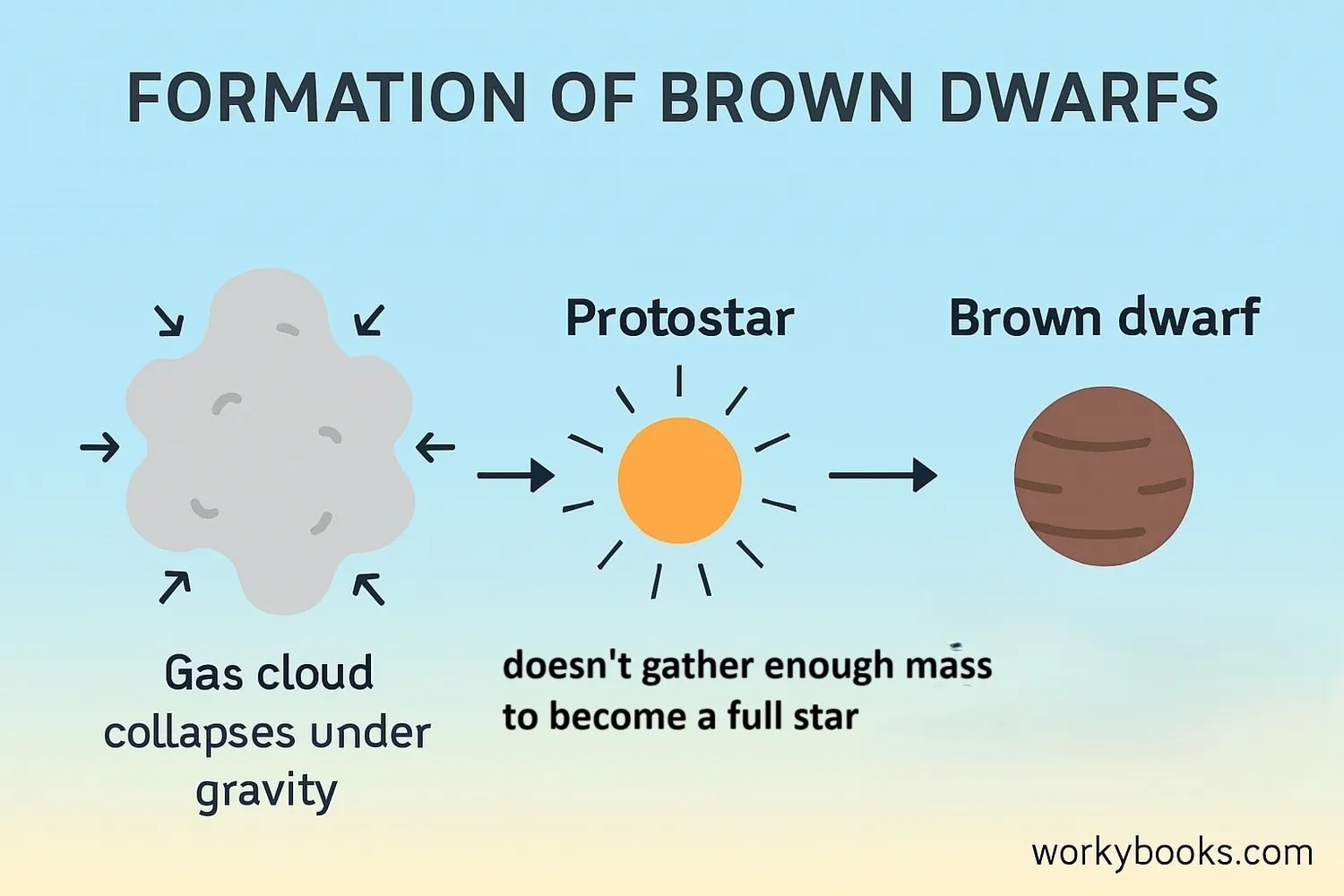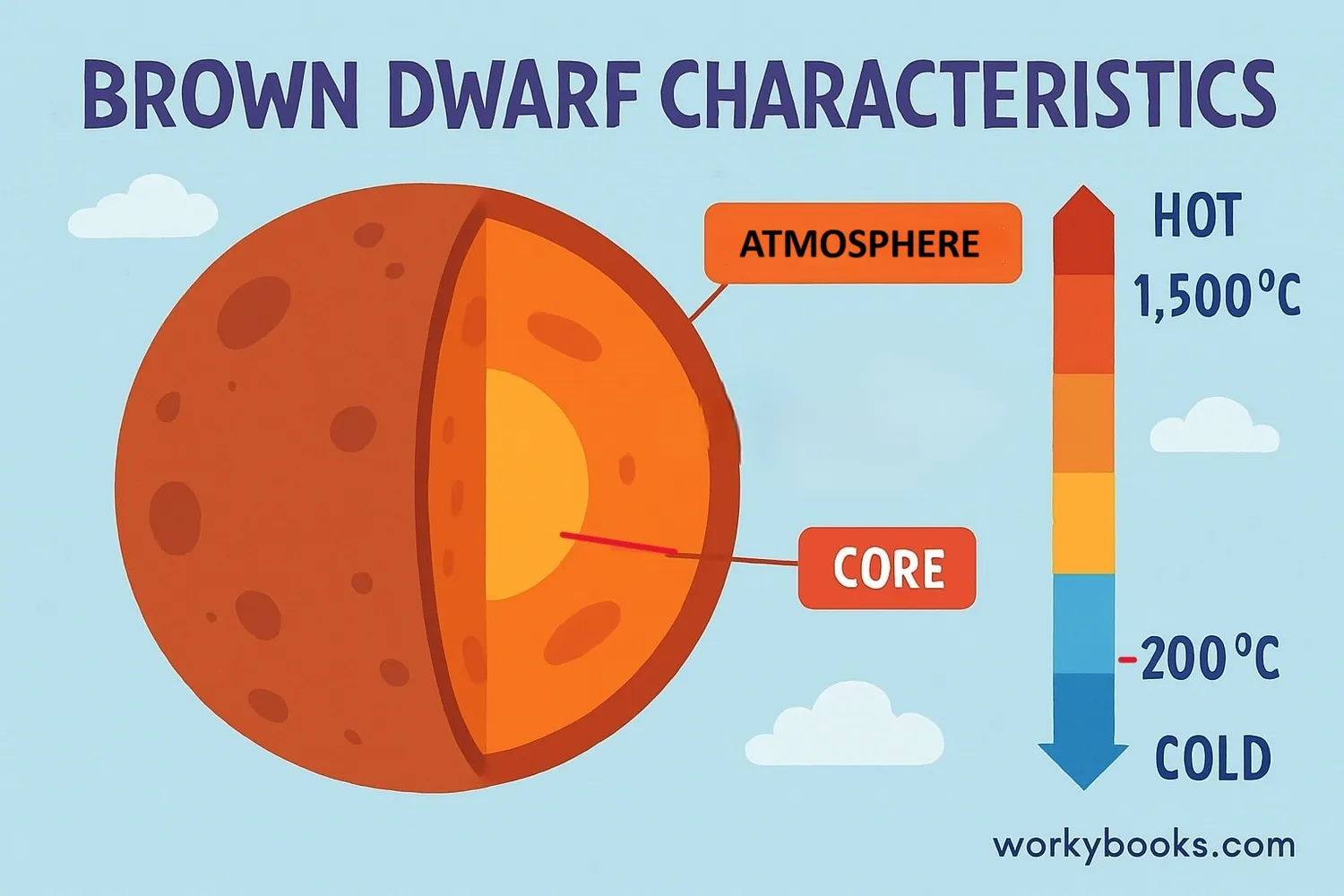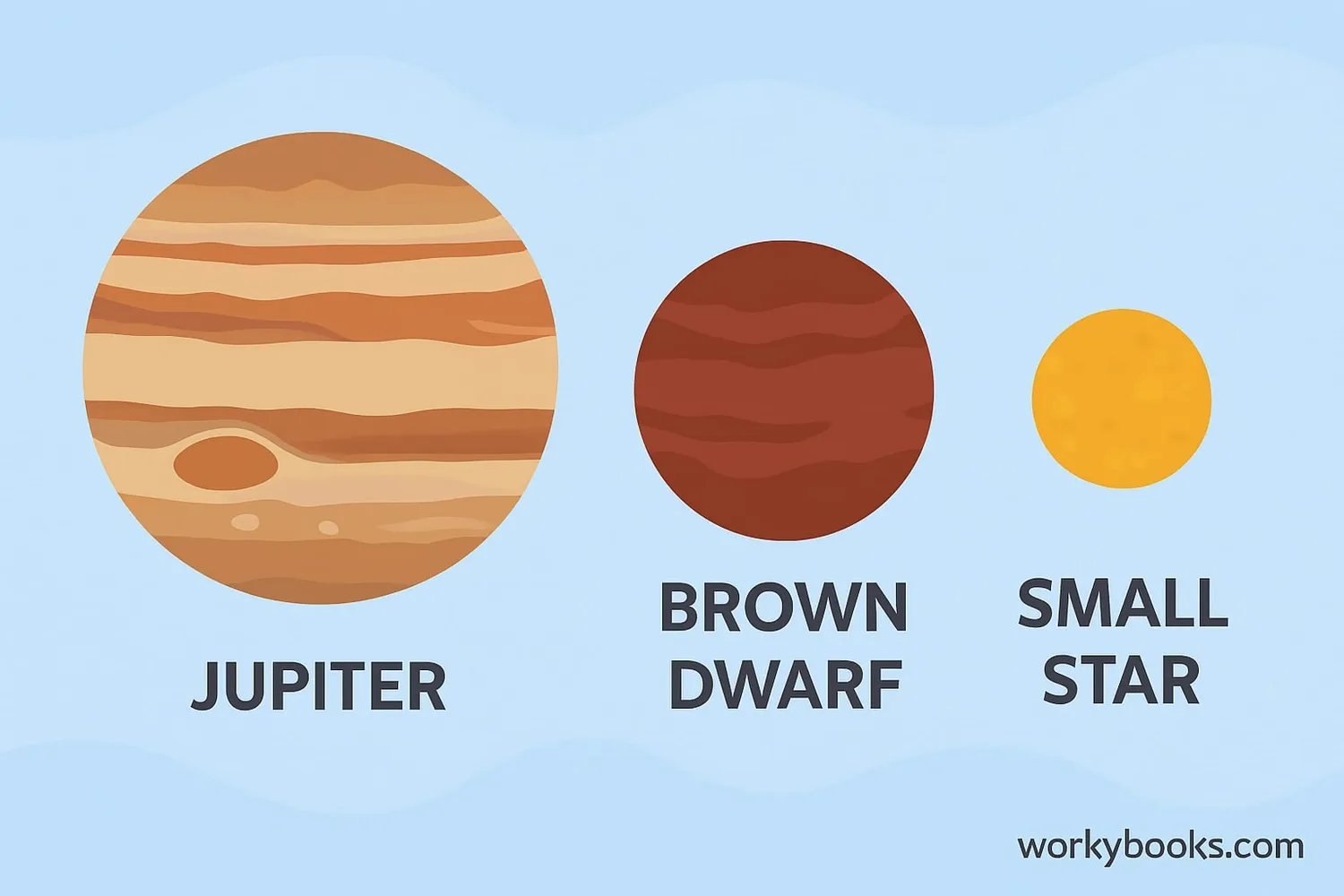Brown Dwarfs: The Cosmic In-Betweeners - Definition, Examples, Quiz, FAQ, Trivia
Discover the mysterious objects that are too big to be planets but too small to be stars!
What is a Brown Dwarf?

A brown dwarf is a fascinating space object that sits between a planet and a star. Imagine something that's too big to be called a planet but too small to be a true star - that's a brown dwarf!
Scientists sometimes call them "failed stars" because they form like stars but don't have enough mass to start the powerful nuclear fusion that makes stars shine brightly. Instead, brown dwarfs glow with a dim, reddish light and gradually cool down over time.
Brown dwarfs are massive - about 13 to 80 times heavier than Jupiter - but much smaller than our Sun. They're like cosmic in-betweeners that help us understand both stars and planets better.
Space Fact!
The first confirmed brown dwarf discovery was Gliese 229 B in 1995, located about 19 light-years from Earth!
How Brown Dwarfs Form & Their Types

Brown dwarfs form just like stars - from huge clouds of gas and dust collapsing under their own gravity. But here's where they differ: they don't collect enough material to reach the critical mass needed for sustained hydrogen fusion.
There are three main types of brown dwarfs classified by their temperature and color:
L-type
Hottest brown dwarfs (1,300-2,000°C), appear red
T-type
Cooler (700-1,300°C), methane appears in their atmosphere
Y-type
Coldest (below 700°C), some as cool as Earth!
Even though brown dwarfs can't fuse hydrogen like stars, the most massive ones can fuse deuterium (heavy hydrogen) for a short time. This gives them a brief period of dim glow before they start cooling down.
As brown dwarfs age, they cool and change color from bright red to deep purple and eventually become nearly invisible in visible light. Astronomers use special infrared telescopes to detect these faint objects.
Cool Fact!
Some brown dwarfs are cool enough to have clouds made of minerals like sand and iron droplets, creating exotic weather patterns!
Key Characteristics of Brown Dwarfs

Brown dwarfs have some unique features that make them special in the cosmic family:
Mass
13-80 times Jupiter's mass - too big for planets, too small for stars
Temperature
Range from 300°C to 2,000°C (cooler than stars)
Atmosphere
Clouds of minerals and molten iron in cooler brown dwarfs
Unlike stars, brown dwarfs don't have a stable internal heat source. They form hot and gradually cool over billions of years, becoming dimmer and dimmer. The coolest brown dwarfs we've discovered have temperatures similar to a warm summer day on Earth!
Brown dwarfs can be found alone in space or orbiting stars. Some even have their own planetary systems. Because they're so common in our galaxy, studying them helps us understand how both stars and planets form.
Brown Dwarfs vs. Stars vs. Planets

Understanding brown dwarfs means seeing how they compare to stars and planets:
| Feature | Stars | Brown Dwarfs | Gas Giant Planets |
|---|---|---|---|
| Nuclear Fusion | Sustained hydrogen fusion | Brief deuterium fusion (in massive ones) | No fusion |
| Mass Range | At least 80 Jupiter masses | 13-80 Jupiter masses | Up to 13 Jupiter masses |
| How They Form | Collapsing gas clouds | Collapsing gas clouds | Form in disks around stars |
| Light Emission | Bright visible light | Dim infrared light | Reflects star's light |
| Temperature | Thousands of degrees | Hundreds of degrees | Negative to hundreds of degrees |
Brown dwarfs are different from planets in important ways. While planets form in disks of material around young stars, brown dwarfs form directly from collapsing gas clouds, just like stars. This makes them more like underachieving stars than overgrown planets!
The boundary between giant planets and brown dwarfs is at about 13 Jupiter masses - this is where deuterium fusion can begin. Below this mass, we have planets; above it, we have brown dwarfs (until 80 Jupiter masses, where hydrogen fusion begins).
Brown Dwarf Quiz
Test your knowledge about brown dwarfs with this space quiz! Answer all 5 questions to see how much you've learned.
Frequently Asked Questions
Here are answers to common questions about brown dwarfs:
Space Trivia
Discover some amazing facts about brown dwarfs:
Alien Weather
Some brown dwarfs have exotic weather with molten iron rain and clouds made of sand! The temperature differences create powerful winds reaching thousands of miles per hour.
Recent Discovery
The first confirmed brown dwarf wasn't found until 1995! Before that, they were just theoretical objects predicted by scientists but never observed.
Close Neighbor
The closest known brown dwarf system is Luhman 16, just 6.5 light-years away. This binary brown dwarf system is the third closest system to our Sun after Alpha Centauri and Barnard's Star.
Rogue Objects
Many brown dwarfs are "rogue" objects not orbiting any star. They wander alone through the galaxy, untethered to any solar system.


